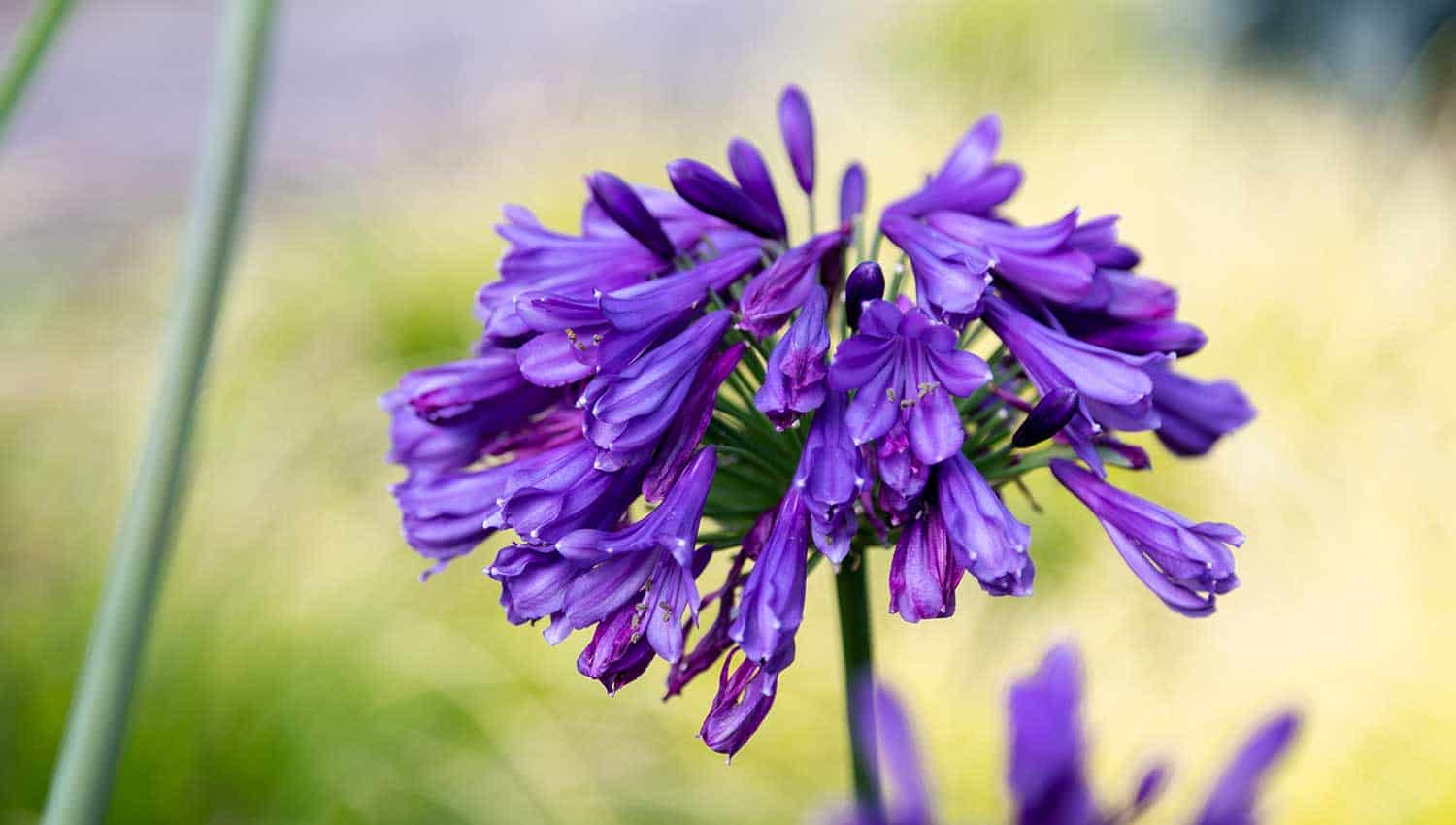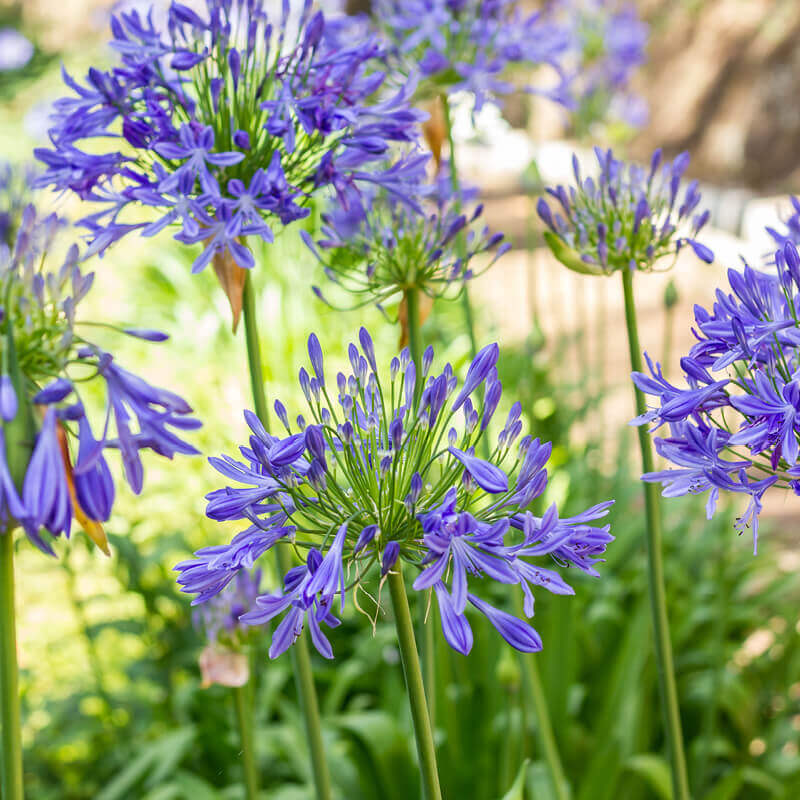Seasonal Agapanthus Treatment: Getting Ready For Wintertime and Summertime
Seasonal Agapanthus Treatment: Getting Ready For Wintertime and Summertime
Blog Article
Letting Loose the Secret to Effective Agapanthus Growing: Advice for a Flourishing Yard
In the realm of horticulture, growing agapanthus successfully needs a strategic method that includes various facets of plant care. By recognizing the subtleties of agapanthus growing, one can create a setting where these plants grow and bloom perfectly.
Planting Agapanthus: Ideal Practices
When planting Agapanthus, correct soil prep work is important for making sure successful development and development of these beautiful flowers. Agapanthus, commonly referred to as Lily of the Nile or African lily, grows in well-draining dirt with a slightly acidic to neutral pH level - Agapanthus. Prior to planting, it is critical to modify hefty clay soils with organic issue such as compost or peat moss to enhance water drainage and provide crucial nutrients for the plants
To grow Agapanthus, select an area that receives complete sunlight to partial shade, as this will certainly promote healthy and balanced growth and plentiful blooming. Dig a hole two times the size of the plant's origin round and place the Agapanthus at the exact same deepness it was previously growing. Delicately backfill the opening with soil, weighing down securely to eliminate any air pockets around the roots.
Water the recently planted Agapanthus extensively and continue to keep the dirt equally moist, particularly during the plant's energetic expanding period. Agapanthus. Using a balanced plant food once a month can further sustain the plant's development and flowering. By following these finest techniques for planting Agapanthus, you can create a sensational display screen of these captivating flowers in your garden
Suitable Soil Conditions for Agapanthus
For ideal growth and blooming success of Agapanthus plants, making sure the dirt problems are ideal is crucial. Agapanthus prefers dirt that is abundant in nutrients, so integrating a balanced plant food during the growing period can promote healthy development and lively flowers.

Watering and Feeding Tips
To guarantee healthy growth and lively flowers, appropriate watering and fertilizing techniques are vital for successful Agapanthus cultivation. Agapanthus plants profit from regular watering, specifically throughout the growing season.
When it comes to feeding Agapanthus, a well balanced plant food with equal parts nitrogen, phosphorus, and potassium can be used in the springtime to promote healthy and balanced development and flowering. Slow-release fertilizers are optimal for providing nutrients progressively over a prolonged duration. Prevent over-fertilizing, as this can result in excessive vegetation development at the expenditure of blooms.
In addition, incorporating natural matter like compost right into the soil can improve nutrient levels and boost dirt structure, aiding in the general health of the Agapanthus plants. By adhering to these watering and fertilizing tips, garden enthusiasts can ensure their Agapanthus plants grow and create stunning screens of blossoms.
Pruning and Deadheading Methods
Correct trimming and deadheading techniques play a critical function in keeping the wellness and aesthetic appeals of Agapanthus plants, enhancing the vital techniques of watering and fertilizing for successful farming. Pruning Agapanthus involves eliminating spent flower heads, dead or yellowing fallen leaves, and total shaping of the plant to promote much better development. Deadheading, the process of getting rid of discolored blossoms, not just boosts the plant's appearance yet also motivates additional growing.
When deadheading Agapanthus, it is suggested to snip off the blossom stem at the base utilizing sharp, tidy shears. This process find redirects the plant's energy from seed production back into origin and vegetation growth, advertising a much healthier and more robust plant. Regular deadheading can prolong the flowering period of Agapanthus and prevent self-seeding, which can lead to overcrowding.
In terms of pruning, Agapanthus generally gain from a light trim after blossoming to clean up the plant and encourage fresh growth. Reducing back the spent flower stems and getting rid of any damaged or dead foliage helps maintain the plant's vitality and total look. Nevertheless, it is important to avoid reducing right into the crown of the plant, as this can damage its health.

Protecting Agapanthus From Vermins and Diseases
Carrying out efficient insect and disease monitoring methods is vital to securing the health and wellness and vitality of Agapanthus plants in farming. Agapanthus are generally sturdy plants, however they can still fall sufferer to various parasites and illness if not correctly looked after. One typical parasite that affects Agapanthus is the Agapanthus borer, a caterpillar that tunnels into the plant, causing damages to the flowers and leaves. To avoid problems, normal evaluation of the plants is essential. If borers are spotted, they can be by hand removed, or insecticidal soap can be made use of as a control step.
In enhancement to pests, Agapanthus are at risk to conditions such as root rot and fungal fallen leave areas. These concerns can frequently be prevented by making sure correct drainage and avoiding overwatering. Affected parts of the plant ought to be immediately gotten rid of to prevent additional spread if indications of illness appear. Fungicides may likewise be made use of as a therapy step, complying with the maker's guidelines very carefully. By remaining attentive and resolving pest and illness problems promptly, garden enthusiasts can assist their Agapanthus grow and prosper.

Verdict
In final thought, effective cultivation of agapanthus needs correct growing techniques, perfect dirt problems, sufficient watering and feeding, normal pruning and deadheading, and defense from diseases and pests. By following these ideas and methods, garden enthusiasts can make certain a flourishing garden loaded with beautiful agapanthus blossoms. Agapanthus. Bear in mind to maintain constant treatment and focus to information to advertise the health and wellness and long life of these magnificent plants
When planting Agapanthus, appropriate soil preparation is find out necessary for making certain successful growth and growth of these gorgeous flowers.Water the recently planted Agapanthus completely and proceed to keep the soil uniformly damp, particularly throughout the plant's energetic growing season.For ideal growth and blooming success you could look here of Agapanthus plants, guaranteeing the soil conditions are suitable is critical. When planting or hair transplanting Agapanthus, make certain the dirt is well-prepared to supply the essential structure for the plants to develop themselves efficiently. One usual pest that impacts Agapanthus is the Agapanthus borer, a caterpillar that tunnels into the plant, creating damages to the fallen leaves and blossoms.
Report this page